10 Fascinating Facts about Zebras
Zebras are undoubtedly one of the most recognizable animals on the planet. These ‘donkeys in striped pyjamas’ are unique and very eye-catching with their distinctive markings. We’ve put together some interesting facts about zebras that will make you an expert and the centre of attention (or the reputation of an annoying know-all) at the next dinner party you are invited to.
Where did the zebra get its name?
While zebras are only found in Africa, the origins of the name ‘zebra’ is actually derived from Spanish/Italian/Portuguese. In Latin, the species was known as equiferus – ‘wild horse’ and by ancient Greeks and Romans, hippotigris – ‘horse tiger’. (These ancients really got around, back in the day!) Anyhow, somehow by a really long stretch of the imagination, equiferus became zebro in Portuguese in the Middle Ages, referring originally to a local wild species and then by Portuguese explorers of the African continent for the stripey animals they found there. Thankfully, for illustrators of the English alphabet for children starting with ‘a is for apple’, ‘ z is for zebra’ rounds up the ABC rather nicely!
How many species of zebra are there?
There are three different ‘models’ of zebra – the Grévy’s zebra, the mountain zebra, and the plains zebra, plus a few subspecies. Grévy’s zebra are only found in Kenya and Tanzania and are quite rare, while mountain zebras – the Cape mountain zebra found in rocky mountainous parts of the Eastern and Western Cape, and Hartman’s mountain zebra which inhabit western Namibia and south-western Angola, are far less plentiful than plains zebras are by far the most abundant, found all over eastern and southern Africa. Zebras belong to the genus Equus (equines) of which there are only three living species – horses, asses and zebras.
How do you tell zebra subspecies apart?
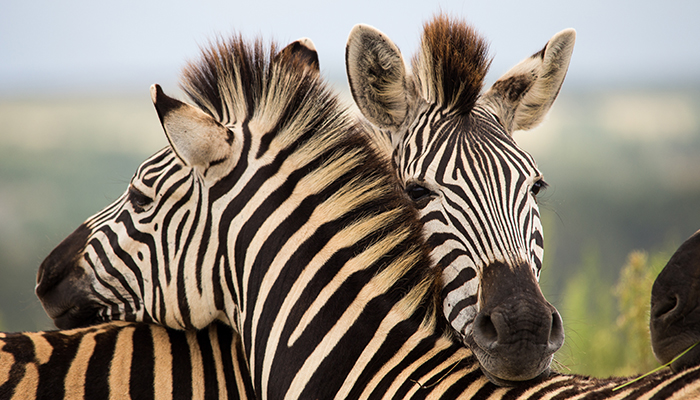
It’s all in the stripes mostly. Grévy’s zebras have the thinnest, most tightly packed stripes. Mountain zebra’s also have fairly dense black stripes with thinner white stripes. Both the Grevy’s and mountain zebras have no stripes on their bellies. The zebra most familiar to South Africans would be the plains zebra, with more widely spaced black stripes with light brown ‘shadow’ stripes in the white sections. The plains zebra’s stripes do extend over its belly.
Is a zebra white with black stripes, or black with white stripes?
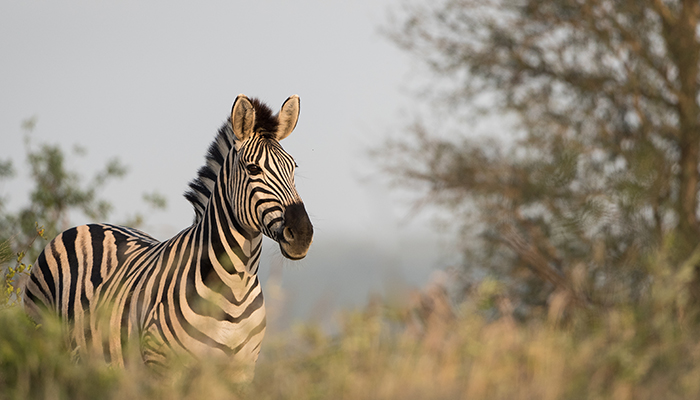
If you guessed white with black stripes, you’d be wrong. Zebra’s skin is all over black, therefore the black fur is dominant with non-pigmented white fur markings. Many ‘experts’ have thought the opposite, mainly because of the absence of black stripes on the bellies of some species, but this has since been disproved.
But why do zebras have stripes at all?
There have been a few theories on the stripy-ness of zebras. One was that of body temperature regulation. An all-black zebra might get rather hot on the sun-baked African plains, but mountain zebras live in the hottest, dryest climates and Grevy’s with their dense black stripes live closest to the equator … so that isn’t it. The theory that is now generally accepted is camouflage. Obviously, a black and white-striped individual zebra sticks out like a sore thumb against the greens and browns of grasslands or rocky areas, but as prey animals they always gather and move in herds. What disguises them as they race from danger is that as a group, predators find it hard to distinguish where one zebra starts and ends, with the stripes blurring into a solid mass.
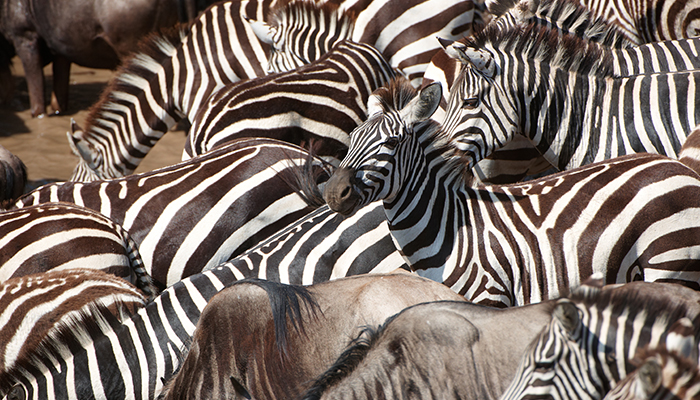
Another proven benefit of stripes is that it confuses biting flies, that don’t know where to land. Horses covered in zebra-striped blankets had up to 50% fewer flies landing on them.
Each individual zebra’s markings are unique
Although each of the subspecies shows typical stripe markings of its type, within those characteristics there are many differences. Basically, a zebra’s markings are like fingerprints, and can be used to identify individual animals in a herd.
Are there zebras with non-conforming markings?
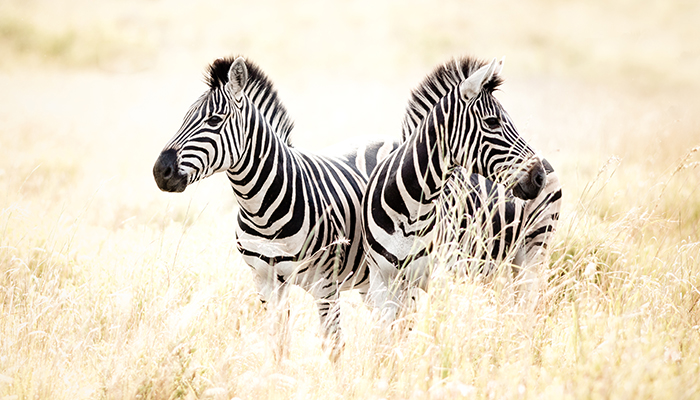
These are rare, but do happen. There is such a thing as a ‘golden zebra’, where an individual is not entirely an albino (complete lack of pigment melanin) but has ‘amelanism’ – an abnormality of pigment, resulting in very light, faded stripes of a gold colour. An extremely rare albino zebra was spotted the Serengeti National Park. Named Ndasiata by park wardens, it almost entirely white, with just a few faint lines on its neck, head and body.
Another rarity was ‘spotted’ in Kenya a few years ago – a newborn zebra foal, mostly black with white polka dots and a few dashes instead of stripes! Actually, zebra foals have brown fur, white only changes to black as they get older.
Are zebras promiscuous?
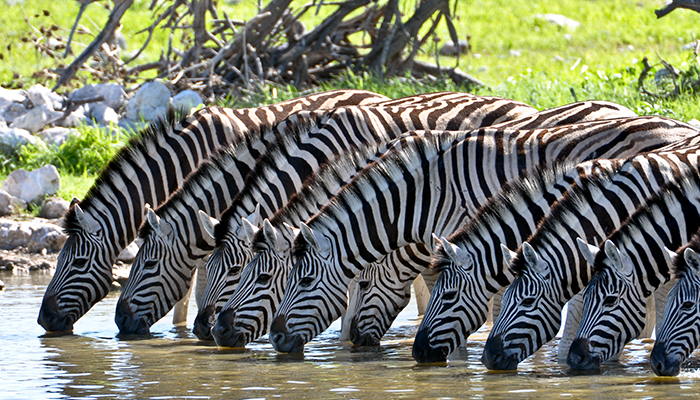
Except for Grevy’s zebras which will tend to mate with any other zebra, the other species of zebra have strict mating rules. Each small group of zebras, called a harem, consist of females, foals and a ‘stallion’ which mates only with the females in his harem. He also always follows at the back of his group to protect the females and youngsters from predators. A real gentleman!
What is a group of zebras called?
Generally, a large group of zebras is called a herd, but there are more creative names for them. How about a ‘zeal of zebras’? But best and most apt is a ‘dazzle of zebras’!
Can zebras be tamed?
No. They are unpredictable, bad-tempered, not a fan of humans and can deliver a very nasty bite and/or a bone-breaking kick. Do not approach, and forget about trying to ride one.
And lastly, a little extra just for fun.
Lame zebra jokes
Why do zebras have stripes?
Because they don’t want to be spotted.
What side does a zebra have the most stripes on?
The outside.
What do a zebra and a panda have in common?
C’mon! The answer is pretty black and white.



